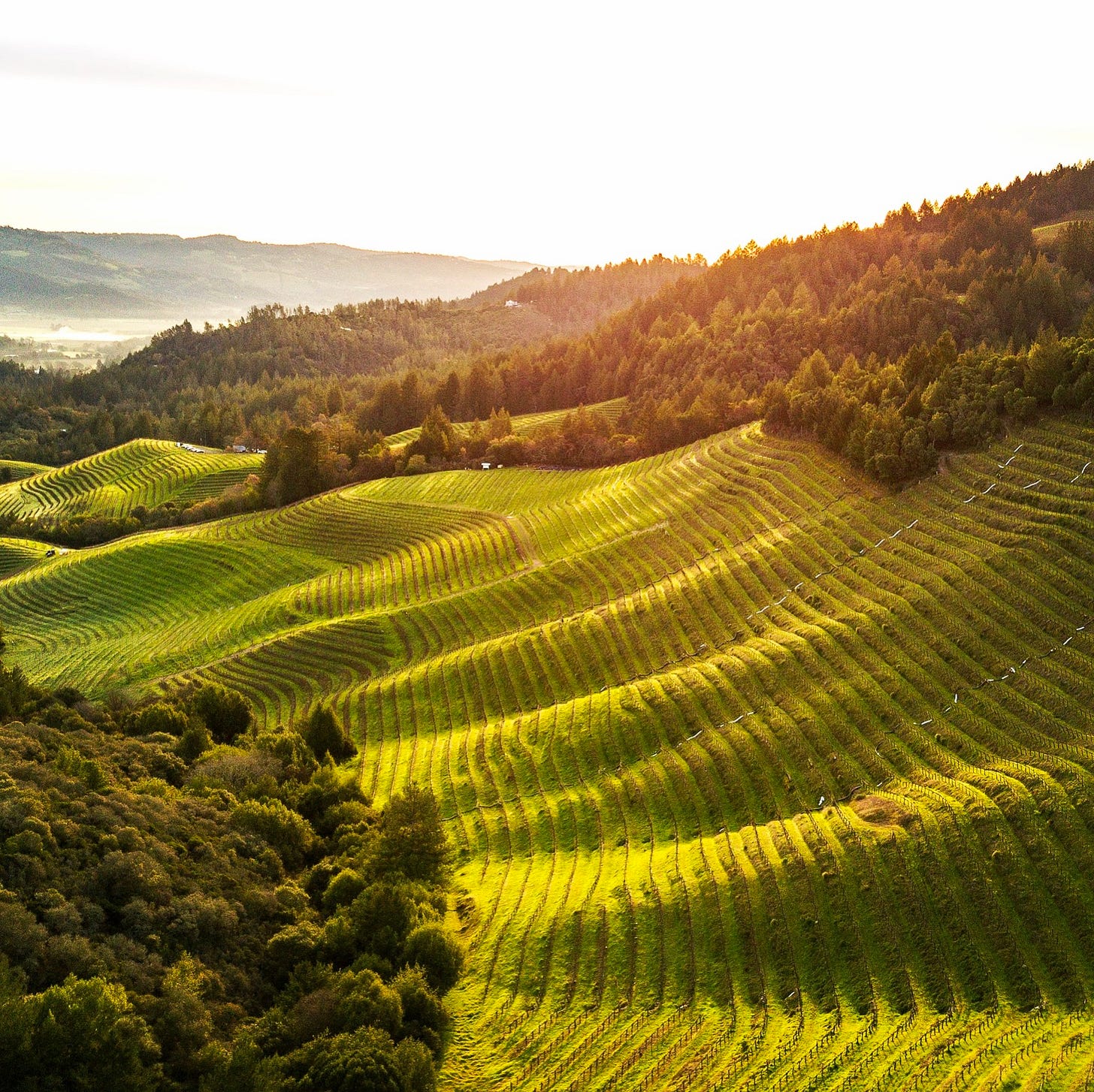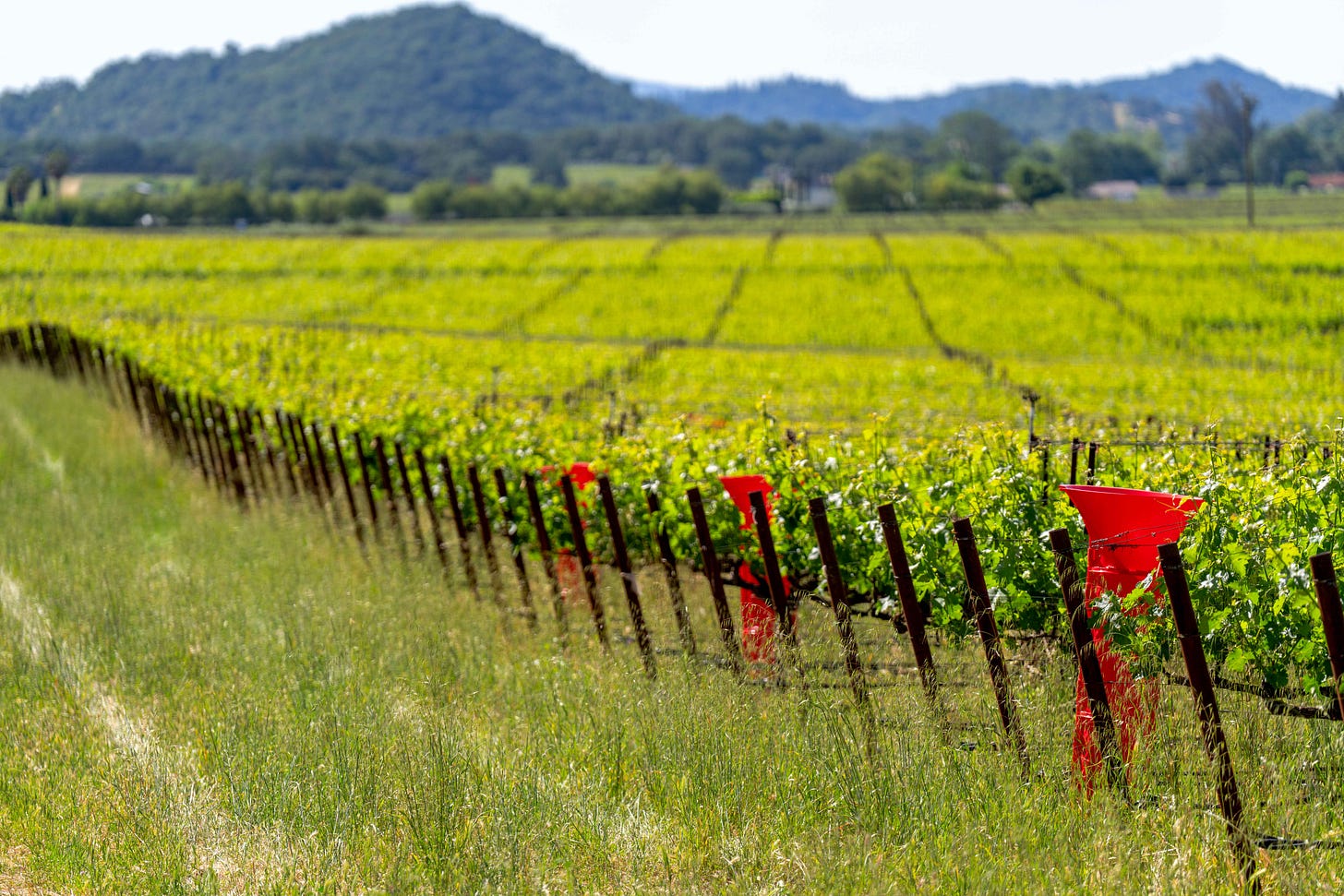Top Stories of 2024 #8: Navigating the Future of the Napa Valley Model
By Tim Carl
As 2024 comes to a close, we are dedicating the final two weeks to a countdown of the year’s most-read stories. Covering a wide range of local topics, these pieces reflect the varied interests of our readers and offer a moment to look back before turning toward 2025. Join us as we revisit the highlights that shaped the year. Original run date: July 6, 2024.
Support Independent Local News
As we celebrate the past year, we also reflect on the future of independent local journalism. Napa Valley Features remains ad-free, conflict-of-interest free and locally owned but depends on reader support to continue. With nearly 4,300 subscribers and fewer than 1,000 paid, even small contributions — just 16 cents a day — can make a big difference. Your support ensures Napa Valley Features stays independent, relevant and a trusted voice for our community.
NAPA VALLEY, Calif. — I spend a lot of time in the community taking photos, interviewing and engaging with restaurateurs, wine industry professionals and grape farmers in Napa County. Most of these are good people who work hard and have a reverence for the land and their community. For a long time, they’ve been riding the wave of a surging wine market, believing that the product — wine — they’ve poured their hope, time and resources into is both healthy and central to providing people with the means to enjoy the good life; to sit around the dinner table with friends and family, talking, laughing and communing.
But a decided shift is happening, and nearly everyone I speak with feels it. A growing number of people tell me their figures are down 10% to 30% from 2023, which was already lower than 2022. They also report tight labor markets and are looking for ways to cut costs while retaining top-performing employees. Some respond with fear, while others with anger. Some focus on finding solutions, while others on rooting out the culprit.
As we've been writing about for the past year, nearly every metric we track suggests a confluence of factors affecting the Napa Valley community at nearly every economic and socioeconomic level, with global, political and demographic realities only adding to the consternation.
And even with all this, although the data have been predicting challenges ahead for some time, it still feels unbelievable. Napa Valley, for many, has always seemed insulated from such counteracting headwinds, having become the shining example of a successful agriculture-based regional economy. Besides, they might argue, the valley dodged much of the pain from the Great Recession, the U.S. stock market is up, unemployment is low and America's long-term prospects are strong with access to energy, relatively healthy demographics and a surge in reshoring manufacturing.
The Rise of the Napa Valley Model
For the last half-century, the Napa Valley has focused on becoming one of the world's premier wine regions. It has produced some of the finest and most expensive wines globally, garnered praise and awards and made a select few very wealthy. It has also set the benchmark for aspiring destinations emulating the “Napa Valley Model” to boost their local economies and prestige.
To get here took many steps, starts and stops, ups and downs. In the late 1800s, Napa Valley became recognized worldwide as a premium source of exceptional wines and distinct beauty. Fueled by navigable waterways, direct access to the San Pablo Bay and ample resources, money poured in from the Gold Rush, driven by a desire to prove Thomas Jefferson correct in his prediction that America would make wines to rival those in France and Italy. However, due to a global recession, phylloxera and growing public distrust of alcohol, the fledgling industry faltered until after Prohibition.
By the second half of the 20th century, winemakers like André Tchelistcheff reconfirmed Napa Valley's potential to produce world-class wines. Robert Mondavi, regarded as one of the greatest promoters of all time, followed by a string of great winemakers such as Warren Winiarski, Mike Grgich and Heidi Barrett, brought their style, prestige and acclaim to the region. Andy Beckstoffer transformed vineyards into branded products that fetch some of the highest-priced grapes in the world. High-quality restaurants like The French Laundry and Mustards Grill became synonymous with Napa Valley. Before the late 1990s, a few hundred thousand tourists visited Napa Valley yearly, often staying for the day or overnighting in the Bay Area due to limited accommodations.
In the late 1990s, things got crazy. The dot-com frenzy in nearby Silicon Valley was another gold rush. Like in the 1800s, a flood of cash flowed into Napa Valley. New speculators saw wine more as an investment opportunity than a historic beverage. These wine speculators might buy grapes from reputable sources, hire a consulting winemaker, come up with a brand name and label, and send their product in for review to Robert Parker Jr. Making wine from Napa Valley grapes only increased their chances of success, so no price for grapes was too high. If they hit the jackpot with a high score, they could sell their wine at exorbitant prices, garnering respect and admiration.
The result was an inundation of cash into the local economy, busy restaurants and growing affluence that increased the tax base and allowed “cow towns” such as St. Helena, Yountville and Calistoga to improve their infrastructure. Napa took longer but eventually became a destination rather than just a pit stop on the way to the valley’s interior.
But then it happened. What had been almost a lark — rebels, outcasts and bohemians gathering to make wine in Napa Valley — got serious. The money and prestige were just too good. Affluent tech elite disruptor types, resorts, chains, Wall Street investors, speculators and the super-wealthy discovered this small valley where anyone might make wine and live with three-star Michelin restaurants within a stone's throw. This led to other gold rushes, the first for real estate and the second a push to drive tourism numbers to feed the growing infrastructure.
Luckily, visionaries in the 1960s put restrictions on development with the Agricultural Preserve, preventing the valley from becoming just another bedroom community for the Bay Area.
By 2012, things were at a fever pitch, and by 2016, millions of visitors came yearly. Local wine auctions brought in tens of millions of dollars, and the number of wineries, wine brands and food service companies exploded. The number of Type-02 Winery licenses shot up to over 25% of the state's total, even though Napa Valley represents only 4% of California's total wine production.
Meanwhile, the population of both the valley and the broader nation ballooned. Baby boomers, America's largest generation, were in their 50s and 60s, having made exceptional personal wealth. They were enamored with expensive wine and food, luxury travel and second homes as investments, further fueling the Napa Valley boom. Some believed this upward trajectory would continue perpetually.
We may come to look back at 2016-18 as the peak of the Napa Valley Model. We have discussed eight factors in numerous pieces over the past year in Napa Valley Features that indicate such a dynamic:
These changes present a dilemma for the Napa Valley community and those emulating the Napa Valley Model. Some advocate doubling down on past strategies, hoping clever marketing will restore the glory days. Others see this as an opportunity to reassess the path forward. Still others suggest reversing course altogether.
Each group has its motivations and desires, but finding a way to coexist is crucial, especially if conditions worsen. Some will claim that opposing views are dangerous or that counterarguments are blasphemous, but these tired arguments won't solve the challenges ahead. The truth may be hard to swallow: the forces we face might be more structural than constructed, requiring us to modify our expectations and approach rather than seek easy solutions.
If today's story captured your interest, explore these related articles:
Under the Hood: Slowing Travel, Declining Wine Demand Threaten Napa Valley
Under the Hood: Napa County Faces Economic Challenges Due to Aging, Decreasing Population
Under the Hood: Napa Valley's Growing Reliance on the Wine Industry
Tim Carl is a Napa Valley-based photojournalist.






Excellent article, lots to think about. The way forward may be the reinforcement of the original motivation for the agricultural preserve which has been the basis for maintaining the "agricultural " backbone of the Valley. This backbone has been the reason so many people visit and stay in Napa. I hope the suburban spawl won't take hold as it has in so many other Bay area communities.
In the past few years I have worried that the wine industry has become the focus of the Napa Valley. People can only drink and afford so much of the overpriced product. I fear the industry has overdone itself. And the valley has lost alot of its charm from these "improvements"